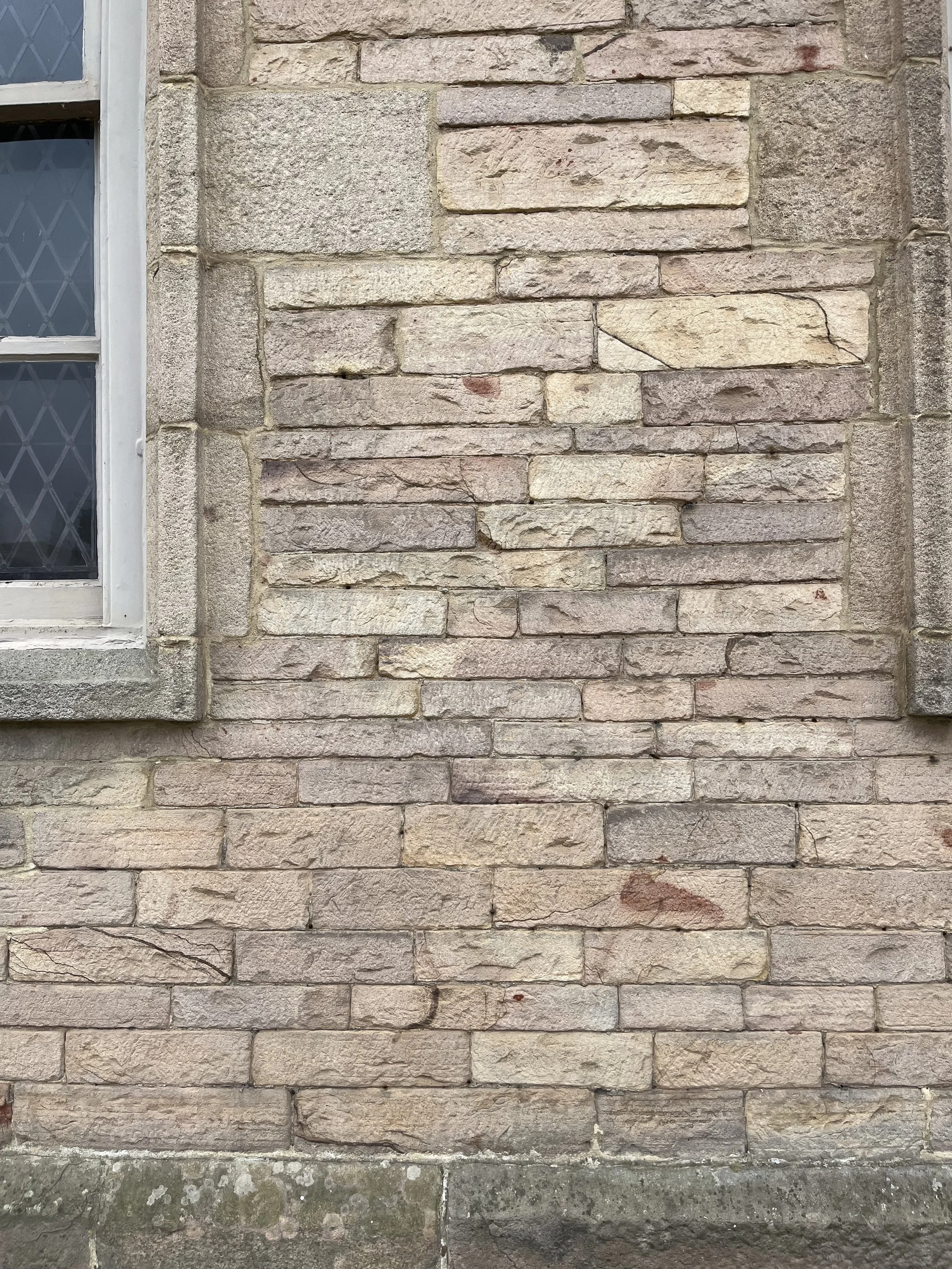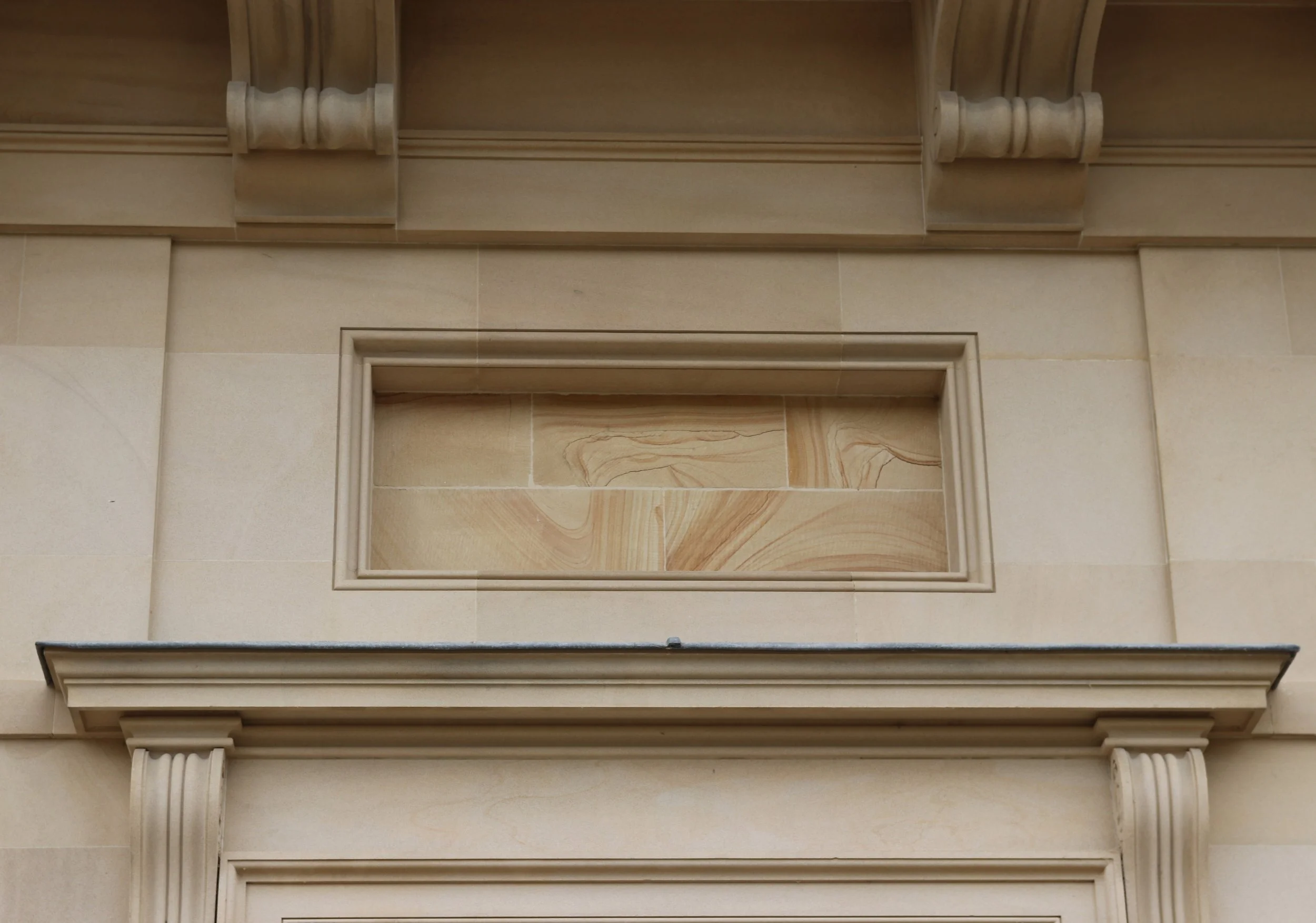DERBYSHIRE FIELD TRIP
Christine Casey and Ruth Siddall
In late July 2025 a field and archival visit to Derbyshire allowed direct engagement with stakeholders in the United Kingdom and close observation of the sandstones, crinoidal limestones and alabaster which are such a striking feature of architecture in this region.
Visits to National Trust properties took place at Kedleston and Lyme Park where the STONE-WORK team benefited from the knowledge and expertise of curators, surveyors and co-ordinators of regional curatorial activity. At Chatsworth House curatorial staff facilitated access to areas of the building off the visitor circuit including roof level of the north range which provided valuable access to sheltered areas of Millstone Grit Masonry. Chatsworth is built from locally quarried sandstones from the Ashover Grit, a particularly high quality building sandstone from the Millstone Grit Group. Stone was procured from Ball Cross and Whicksop Edge, outcropping above Bakewell, and in the 19th Century from Burntwood Quarry near Beeley.
Kedleston is familiar to all students of architectural history for its singular role in the genesis of Neoclassicism, Robert Adam’s garden front famously integrating a triumphal arch and pantheon-like dome, while the giant alabaster columns of the marble hall are seen to reflect Adam’s ambition to recreate the splendour of ancient Rome. However, a vital aspect of the building has been largely overlooked, namely the choice of stone with its distinctive bedding pattern that has been accentuated over time by differential weathering. The Coxbench sandstone columns of the entrance and garden fronts exhibit an undulating pattern evocative of marble veining whose weathering has produced dramatic visual effects.
Coxbench stone at Kedleston. Photo: Christine Casey
Visits to disused and working quarries deepened our understanding of stone formation and workability. The famed Derbyshire fossil marble or crinoidal limestone, seen first-hand at the now abandoned Ricklow quarry, exhibits in raw form the exceptionally large crinoid fossils that quarrymen called ‘nuts and bolts’ or ‘screws’; when polished it displays a rich tapestry of Lower Carboniferous marine life, as seen in the window seats, chimneypieces, staircase and fountain at Chatsworth.
Crinoidal limestone at Ricklow quarry. Photo: Melanie Hayes
‘A picture sandstone’, as characterised by geologists, describes perfectly the markings of iron-rich ‘liesegang bands’ in the ashlar masonry of Chatsworth, panels of which are isolated for visual effect in the attic register of the 19th Century north extension at Chatsworth. Primary cross-bedding forms a similar decorative effect in the columns and masonry at Kedleston Hall.
‘Liesegang bands’ in a panel at Chatsworth. Photo: Ruth Siddall
But not all sandstones are the same and the thick beds of Ashover grit seen at Birchover quarry differ greatly from the thinner beds of sandstone found in the overlying Coal Measures. At Lyme Park elevations from successive periods display the responses of architects and masons to the building stone available to them. In this case the Milnrow Sandstone from the Lower Pennine Coal Measures Formation. The masonry courses of the north front are almost brick-like in their shallowness in contrast to the deeper ashlar courses of the later elevations by Giacomo Leoni.


Chatsworth, Lyme Park and Kedleston are sites of enormous value to STONE-WORK’s research, not only for their illustration of distinctive lithologies but also for the wealth of archival evidence which helps us to understand the collective and interdependent activities that produced them. Drawings, building accounts, correspondence and legal proceedings illuminate those involved in procuring and working stone. Stone masons such as Benjamin Jackson and the Platt family of Disley and Rotherham and carvers such as Samuel and Henry Watson and James Gravenor emerge from the deep shadows hitherto cast by architects and patrons.
Our thanks to the curatorial staff at both the National Trust and Chatsworth House for kindly facilitating special access to these properties and for their generous engagement with our research.



